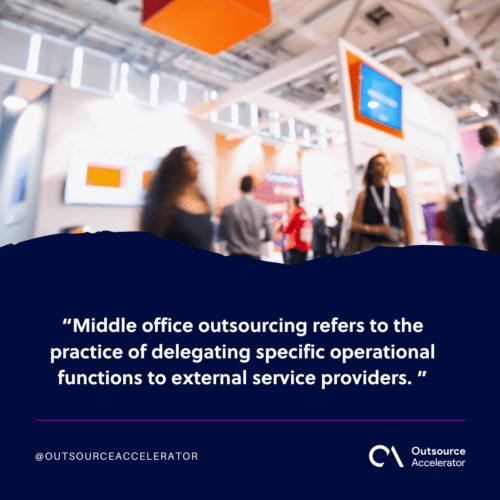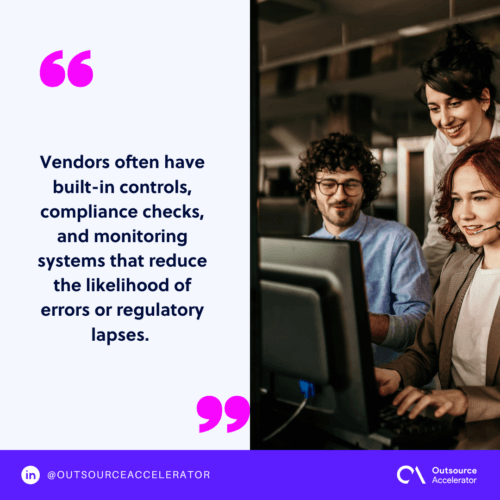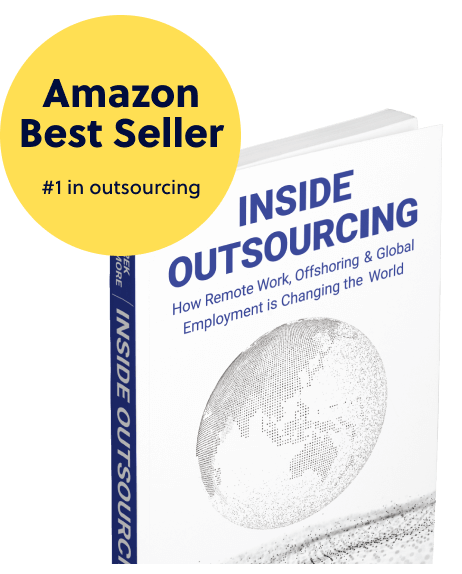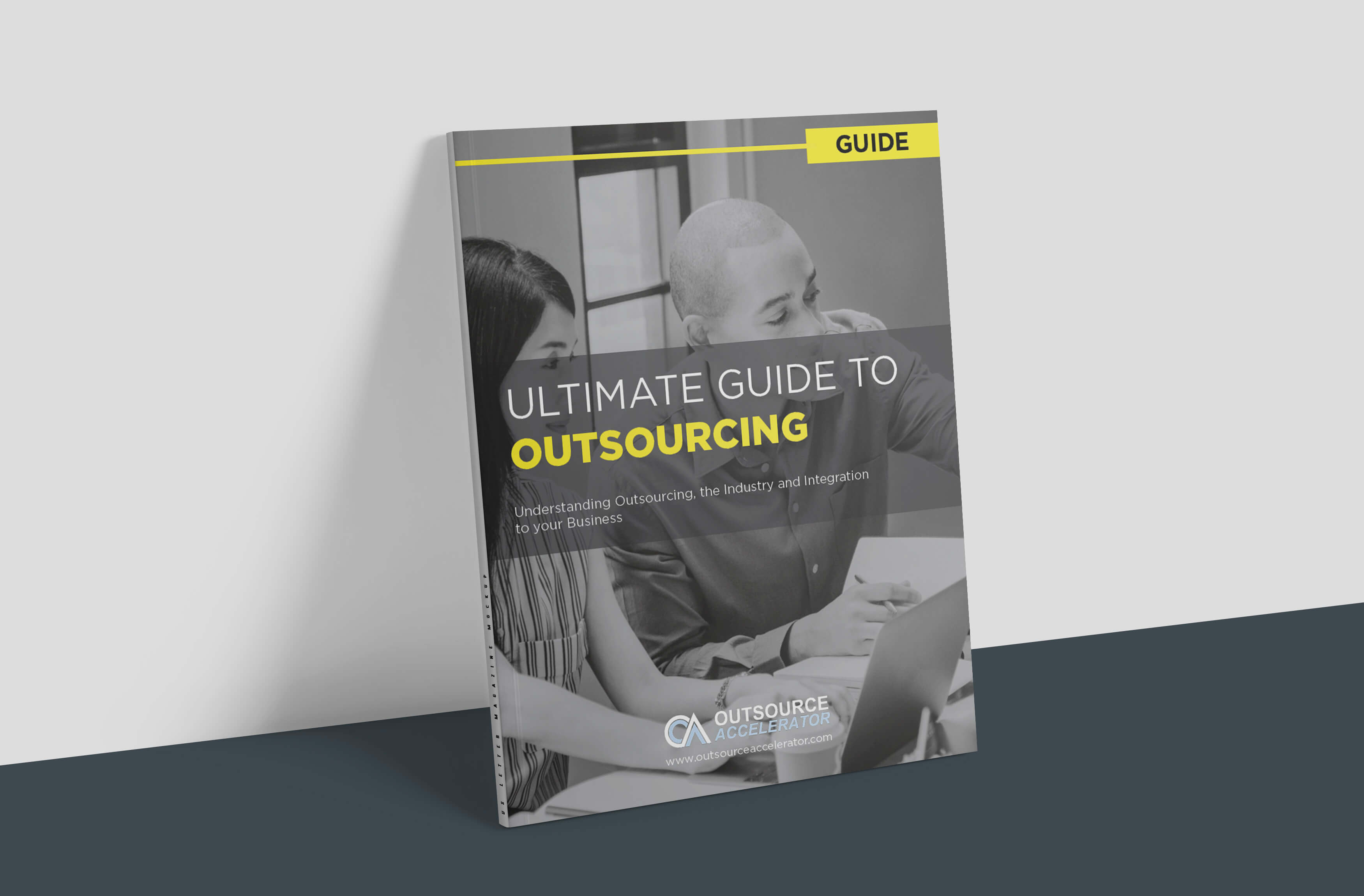Middle office outsourcing: What it is and why you need it now

Managing middle office operations presents a unique set of challenges for financial institutions. These functions (e.g., trade reconciliation, risk management, and compliance reporting) are critical yet often complex and resource-intensive.
Institutions must balance the need for accuracy and timeliness with the pressures of cost control and regulatory compliance.
According to IMARC Group, the global middle office outsourcing market was valued at USD 8.5 billion in 2024 and is projected to reach USD 16.9 billion by 2033, growing at a compound annual growth rate (CAGR) of 7.47% from 2025 to 2033.
This growth underscores the increasing reliance on specialized third-party providers to handle these essential functions.
In this article, we’ll explore what middle office outsourcing entails and how it can drive business growth and success by enhancing efficiency, reducing costs, and allowing firms to focus on their core competencies.
What is middle office outsourcing?
Middle office outsourcing refers to the practice of delegating specific operational functions to external service providers, specifically, parts that are typically related to:
- Trade support
- Risk management
- Data management
These areas of business operations sit between the front office (which handles client-facing activities and trading) and the back office (which manages settlement and record-keeping).

How does middle office outsourcing work?
Outsourced middle office services often include:
- Trade reconciliation
- Performance reporting
- Regulatory support
- Corporate actions processing
- Collateral management
Providers use a combination of technology platforms and skilled professionals to handle these time-sensitive and accuracy-driven tasks.
Companies that choose to outsource these responsibilities typically collaborate closely with their chosen vendors to maintain process integrity and transparency.
This model helps organizations transfer complex workflows to firms that specialize in handling such operations.
Yes, the specific scope varies based on the company’s size and industry. However, most outsourcing partnerships involve a structured framework with defined roles, access to real-time data, and clear reporting lines for accountability.
8 Essential benefits of middle office outsourcing
As financial firms grow and market demands shift, many are turning to middle office outsourcing to stay competitive.
This allows organizations to delegate specialized operational tasks to third-party providers, which helps them focus more on strategy and client relationships.
Here are the primary advantages of outsourcing middle office functions:
1. Cost efficiency
Middle office outsourcing helps reduce operational expenses by limiting the need for in-house infrastructure and staff. Instead of investing in expensive systems or large internal teams, firms can pay for only the services they need.
This model also makes fixed costs more variable, giving businesses more financial flexibility.
2. Access to expertise
Third-party providers typically specialize in specific middle office services, offering a depth of knowledge and experience that’s hard to build internally.
These partners stay up to date with industry standards, regulatory changes, and technological advancements, bringing a higher level of operational precision to the table.
3. Improved scalability
As businesses grow, their operational demands often increase. Middle office outsourcing allows firms to scale services up or down without the burden of hiring or restructuring internal departments.
This adaptability is particularly helpful during mergers, expansion into new markets, or periods of heightened trading activity.
4. Enhanced focus on core activities
By handing off routine yet vital middle office tasks, internal teams can concentrate on value-driven activities such as portfolio management, client servicing, and strategic planning.
A division of labor often leads to improved productivity and better client outcomes.
5. Faster adoption of technology
Outsourcing solutions providers typically use modern platforms that support automation, data integration, and real-time reporting.
Rather than building these capabilities from scratch, clients gain instant access to advanced tools and infrastructure that might otherwise take years to develop internally.
6. Risk reduction
Although not completely risk-free, outsourcing can help companies manage operational risk more effectively. Vendors often have built-in controls, compliance checks, and monitoring systems that reduce the likelihood of errors or regulatory lapses.
Partnering with experienced service providers lets businesses create more reliable workflows.

7. Better data management
Accurate and timely data is critical for decision-making in financial services. Middle office outsourcing partners often offer robust data governance frameworks and technology that support the following:
- High-quality data aggregation
- Reporting, and
- Security
This helps firms maintain a single source of truth.
8. Operational continuity
Reputable third-party providers are also backed by strong disaster recovery and business continuity protocols.
In the event of system outages or unexpected disruptions, these firms can maintain uninterrupted service so clients stay compliant and responsive.
Innovation is driving the future of middle office outsourcing
Technological advancements are reshaping middle office outsourcing by introducing smarter, faster, and more adaptive solutions.
Automation, cloud computing, and AI are streamlining tasks like trade reconciliation, data processing, and compliance reporting. These technologies reduce manual effort and make operations more transparent and responsive.
As financial markets grow more complex, outsourcing partners are integrating advanced tools to meet rising demands for speed and accuracy.
Innovation also supports real-time data access and improved decision-making, allowing firms to stay agile in competitive environments. This shift marks a new era where technology and expertise come together to redefine how middle office functions are delivered.







 Independent
Independent




